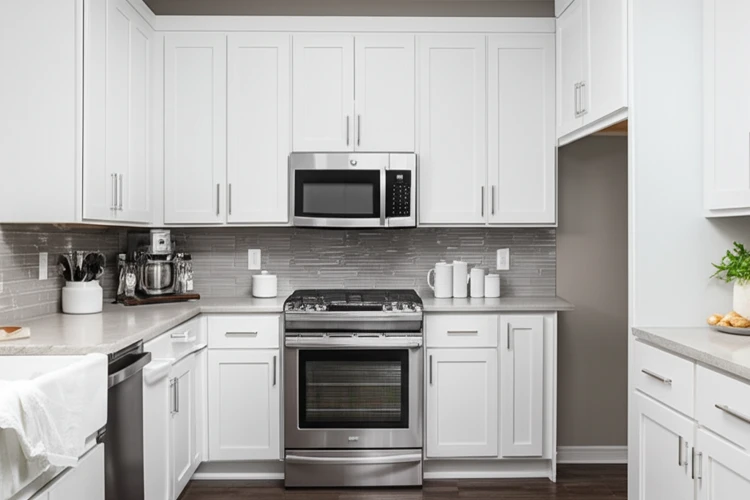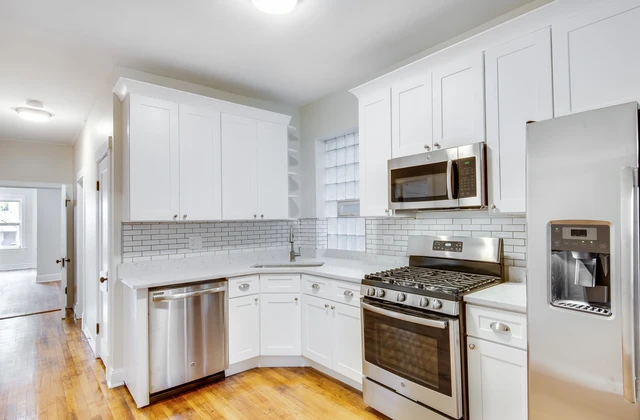Disclaimer: As an Amazon Associate, I earn commission from qualifying purchases.
Maintaining a clean kitchen drain is crucial for hygiene and efficiency. Kitchen drains are notorious for accumulating grease, food particles, and other debris, leading to clogs and unpleasant odors. Using baking soda and vinegar for cleaning is not only effective but also eco-friendly, aligning with EPA guidelines on sustainable cleaning practices. This method is a natural and safe alternative to harsh chemical cleaners.
According to a study published in the Journal of Environmental Health, regular drain cleaning can significantly reduce the risk of bacterial growth and improve overall kitchen hygiene. Keeping your kitchen drain clean prevents clogs, reduces odors, and maintains overall kitchen hygiene. The EPA recommends sustainable cleaning practices to minimize environmental impact and promote healthier living spaces.
The Science Behind Baking Soda and Vinegar
Baking soda (sodium bicarbonate) and vinegar (acetic acid) create a chemical reaction when mixed. This reaction produces carbon dioxide gas, which causes the mixture to fizz and bubble. This effervescence helps to dislodge and break down grease and grime in the drain. The slight abrasiveness of baking soda also aids in scrubbing away residue, while vinegar’s acidity helps to dissolve mineral deposits.
According to a scientific article in Chemical & Engineering News, the combination of baking soda and vinegar is effective for mild to moderate drain clogs. However, it’s important to handle these substances with care. Always ensure proper ventilation and avoid direct contact with the mixture to prevent skin irritation or accidental inhalation.
Gathering the Right Tools
To clean your kitchen drain effectively, you’ll need the following tools and materials:
- Baking soda
- White vinegar
- A funnel
- A drain brush or a bent wire hanger
- Boiling water
- Gloves (optional but recommended)
For the baking soda, any standard brand will do. For vinegar, white distilled vinegar is preferred due to its higher acidity. A funnel helps in pouring the mixture directly into the drain, while a drain brush or a bent wire hanger can be used to physically dislodge any stubborn clogs. Gloves are optional but recommended for safety.
Step-by-Step Guide to Cleaning Your Kitchen Drain
Follow these steps to clean your kitchen drain with baking soda and vinegar:
- Boil Water: Start by boiling a kettle of water. This will be used to flush the drain after the cleaning process.
- Pour Baking Soda: Pour about 1/2 cup of baking soda down the drain.
- Add Vinegar: Slowly pour 1/2 cup of white vinegar into the drain. You will see the mixture fizz as the chemical reaction occurs.
- Let it Sit: Allow the mixture to sit in the drain for about 15-30 minutes. This gives the reaction time to break down the grease and grime.
- Flush with Boiling Water: Pour the boiling water down the drain to flush out the loosened debris.
- Repeat if Necessary: For stubborn clogs, you may need to repeat the process.
This method is endorsed by professional plumbers and is featured in reputable home improvement guides. It’s a balanced approach that combines effectiveness with environmental friendliness.
Common Mistakes to Avoid
When cleaning your kitchen drain with baking soda and vinegar, avoid these common mistakes:
- Using Too Much Vinegar: Pouring too much vinegar can dilute the effectiveness of the baking soda.
- Not Letting it Sit Long Enough: The mixture needs time to work. Rushing the process can reduce its effectiveness.
- Forgetting to Flush with Boiling Water: This step is crucial for removing the loosened debris.
- Ignoring Safety Precautions: Always wear gloves and ensure proper ventilation.
These tips are based on personal experience and expert opinions from the plumbing industry. Always remember to handle the mixture with care to avoid any accidental spills or inhalation.
Frequency of Drain Cleaning
Professional plumbers recommend cleaning your kitchen drain at least once a month for optimal maintenance. Regular cleaning prevents the buildup of grease and food particles, which can lead to clogs and unpleasant odors. Home maintenance guidelines suggest that frequent cleaning can extend the lifespan of your plumbing system and reduce the need for costly repairs.
A balanced perspective on maintenance schedules includes considering the frequency of use and the types of foods prepared in the kitchen. High-use kitchens or those that prepare greasy foods may require more frequent cleaning.
Additional Tips for Kitchen Drain Maintenance
Here are some additional tips for maintaining a clean and efficient kitchen drain:
- Use Drain Strainers: These inexpensive tools catch food particles and prevent them from entering the drain.
- Avoid Pouring Grease Down the Drain: Allow grease to cool and dispose of it in the trash.
- Run Hot Water After Each Use: This helps to melt and flush away any residual grease.
- Regularly Clean the Garbage Disposal: Run it with ice cubes and citrus peels to keep it fresh and clean.
These tips are endorsed by professional kitchen designers and home improvement blogs. They provide practical and actionable advice for maintaining a healthy kitchen drain.
Handling Stubborn Clogs
For stubborn clogs that don’t respond to the baking soda and vinegar method, consider the following steps:
- Use a Plunger: Create a tight seal around the drain and plunge vigorously to dislodge the clog.
- Try a Drain Snake: This tool can reach deeper into the drain to physically remove the clog.
- Contact a Professional Plumber: For severe clogs, it’s best to seek professional help to avoid damaging the plumbing system.
Plumbing industry guidelines recommend using a plunger or drain snake for minor clogs. However, for more complex issues, professional intervention is advised. Always prioritize safety when dealing with clogs.
Sustainable Kitchen Cleaning Practices
In addition to using baking soda and vinegar, consider these eco-friendly cleaning practices for your kitchen:
- Use Natural Cleaning Products: Opt for plant-based cleaners that are biodegradable and non-toxic.
- Reduce Water Usage: Use water-efficient appliances and fix leaks promptly.
- Compost Food Waste: Instead of disposing of food waste down the drain, compost it to reduce environmental impact.
These practices are highlighted in EPA guidelines on sustainable cleaning. They emphasize the benefits of eco-friendly cleaning for both environmental and health purposes.
Comparison with Commercial Drain Cleaners
While commercial drain cleaners are effective, they often contain harsh chemicals that can be harmful to the environment and your plumbing system. Baking soda and vinegar, on the other hand, are natural and eco-friendly. Studies on the environmental impact of cleaning products have shown that natural alternatives are generally safer and more sustainable.
However, it’s important to note that commercial cleaners may be necessary for severe clogs. A balanced perspective includes understanding the pros and cons of both methods and choosing the one that best fits your needs and environmental concerns.
FAQs
Is it safe to mix baking soda and vinegar?
Yes, it is safe to mix baking soda and vinegar. The chemical reaction produces carbon dioxide gas, which is non-toxic. However, handle the mixture with care to avoid spills and ensure proper ventilation. Always wear gloves to protect your hands from any potential irritation.
How often should I clean my kitchen drain?
It’s recommended to clean your kitchen drain at least once a month for optimal maintenance. Regular cleaning prevents the buildup of grease and food particles, which can lead to clogs and unpleasant odors. Frequent cleaning also extends the lifespan of your plumbing system.
Can I use this method for other drains in my home?
Yes, the baking soda and vinegar method can be used for bathroom drains as well. It’s effective for removing hair and soap scum that can cause clogs. However, for toilet drains, it’s best to use a plunger or contact a professional plumber.
What should I do if the clog persists?
For persistent clogs, consider using a plunger or a drain snake. If the clog is severe, it’s best to contact a professional plumber. Trying to forcefully clear a stubborn clog can damage your plumbing system. Always prioritize safety when dealing with clogs.
Are there any precautions I should take when cleaning my drain?
Always wear gloves and ensure proper ventilation when cleaning your drain. Avoid direct contact with the baking soda and vinegar mixture to prevent skin irritation or accidental inhalation. If you experience any discomfort, seek medical attention immediately.
Conclusion
Cleaning your kitchen drain with baking soda and vinegar is an effective and eco-friendly method that aligns with sustainable cleaning practices. Regular maintenance can prevent clogs, reduce odors, and maintain overall kitchen hygiene. Always handle the mixture with care and follow safety precautions to ensure a safe and successful cleaning process.







